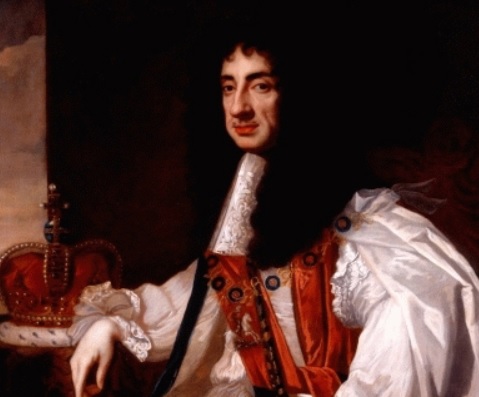
King Charles II is known as the Merry Monarch, the restored king whose court was known for its partying and wild antics. However, he also founded one of the most important scientific institutions in the world and, in the process, created a place that still offers one of the best views of London.
This King Charles was a dedicated patron of the sciences. He was personally interested in chemistry and alchemy, and often carried out experiments in his own personal laboratory. And in July 1662, he signed a Royal Warrant creating the Royal Society of London.
In March of 1674, King Charles named John Flamsteed as the first Royal Astronomer. In addition to creating the position, the King charged Sir Christopher Wren and Robert Hooke with the task of designing what would become the Royal Greenwich Observatory.
On the site of the old Greenwich Castle, the first stone was laid in August 1675. Flamsteed was working in the observatory by the summer of 1676 and it remains a hub of activity to this day.
But fabulous views weren’t high on the priority list for Charles II. What would become the Royal Greenwich Observatory was founded at a time when England was emerging as a leading maritime power and navigation at sea was of critical importance. The primary motivation behind its establishment was the urgent need to solve the “longitude problem.”
While latitude could be determined relatively easily using the position of the sun or stars, determining longitude at sea remained a serious challenge. This lack of precision often led to disastrous errors in navigation, shipwrecks, and losses in both commerce and military operations. Recognizing the strategic importance of accurate navigation, Charles II issued a royal warrant to create an observatory dedicated to astronomy and navigation.
The king appointed John Flamsteed as the first Astronomer Royal, charging him with the task of “rectifying the tables of the motions of the heavens” and developing more accurate star charts that could help sailors determine their position at sea.
However, the reasons for choosing the location would help position it in a place of beauty. The site was chosen because it lay on high ground, away from much of the smoke and bustle of the city, and provided clear views of the sky. The building itself, designed by Sir Christopher Wren, incorporated elements of existing structures on the site, including the remains of a tower. It was completed relatively quickly, and by the late 1670s Flamsteed had begun his meticulous work.
The establishment of the Royal Observatory marked an important step in institutionalizing astronomy as a tool for state power and global exploration. Flamsteed’s work, although painstaking and sometimes controversial, laid the foundation for future breakthroughs in navigation.
Over time, the observatory became a centre for astronomical observation, timekeeping, and cartography. It also played a crucial role in the development of the Greenwich Meridian, which was later adopted internationally as the Prime Meridian in 1884, cementing Greenwich as the reference point for longitude and standard time.
Not only does the observatory offer one of the best views of London, including the Queen’s House and the Old Royal Naval College, it is still used today.
The founding of the Royal Observatory represented more than just the building of an astronomical institution—it symbolized the intersection of science, empire, and commerce in the 17th century. By harnessing astronomy for practical navigation, the observatory contributed directly to England’s ability to expand its naval dominance and overseas trade.
Today, the Royal Observatory stands not only as a historic scientific institution but also as a reminder of the critical role astronomy has played in shaping modern navigation and global connectivity. And it still has the best view in London.

